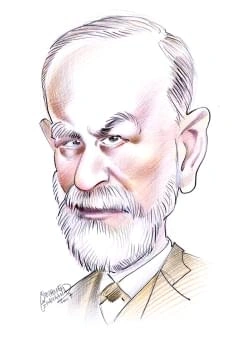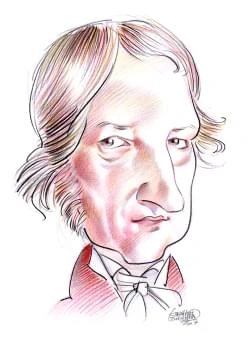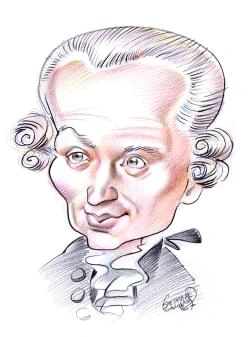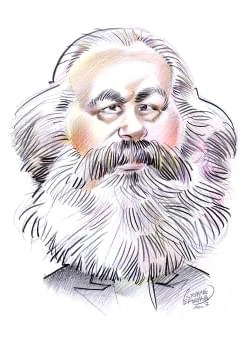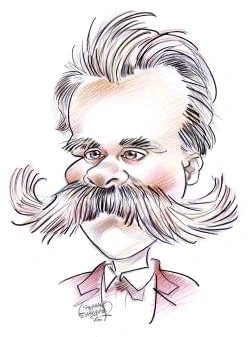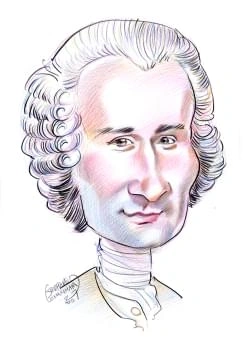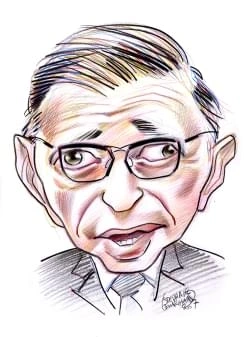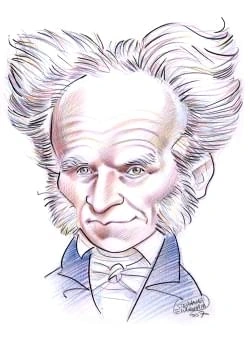708 résultats pour "economics"
-
Indian Treaties in Canada - Canadian History.
Pontiac led an attack on British forts in the Great Lakes area to end British domination and to reinforce Indian autonomy. In response, British king George III issued theRoyal Proclamation of 1763 to try to appease the Indians of the interior. The proclamation set aside land for the Indians west of the Appalachian Mountains anddescribed this land as “lands reserved to [Indians] … as their Hunting Grounds.” The proclamation not only recognized Indian land ownership, but also required thattreaties...
-
Exposé : «Situación económica actual de argentina desde la llegada de Milei»
Exposé : «Situación económica actual de argentina desde la llegada de Milei» Diapo 1 : Introduction Buenos días a todos. Hoy vamos a analizar un tema crucial para entender la actualidad económica de Argentina: el balance de las políticas económicas de Javier Milei, el recién electo presidente. Conocido por su postura libertaria, Milei ha captado tanto admiración como críticas por su proyecto radical de transformar la economía argentina. Su modelo, que busca reducir drásticamente el rol del...
-
International trade
In dealing with the first part of his quote, and retaliating against free trade critiques, Panagariya refers to the examples of India and China, which experienced tremendous advances in the living conditions of their population through opening to international markets. The tendency of neoliberals to ensure that the positive paths of countries that have previously adopted free trade are a guarantee for success to all the other ones is eloquently brought up by Broad and Cavanagh in The...
-
Richard Bennett.
that had existed since 1920. He used able people from various government departments to write legislation, to negotiate trade agreements, and to act as economicadvisers. He also built up the political and secret work of the Royal Canadian Mounted Police. A Tariff Policy Bennett's tariff policy combined protection for Canadian farmers and manufacturers and special treatment for nations that were members of the British Commonwealth.In 1932, at a Commonwealth economic conference, a series of agree...
-
Richard Bennett - Canadian History.
that had existed since 1920. He used able people from various government departments to write legislation, to negotiate trade agreements, and to act as economicadvisers. He also built up the political and secret work of the Royal Canadian Mounted Police. A Tariff Policy Bennett's tariff policy combined protection for Canadian farmers and manufacturers and special treatment for nations that were members of the British Commonwealth.In 1932, at a Commonwealth economic conference, a series of agree...
-
Silk Road - History.
and high in value because they were carried on the backs of the limited number of camels in each caravan. Thus, of necessity they were luxury items, not bulky rawmaterials or essential goods for daily use. The oases and towns along the route, which were located in or near remote areas, profited from the Silk Road trade and reliedon it for their existence. The great empires of Persia, China, and Rome, however, could easily have survived without the commerce in luxury goods. V SPREAD OF RELIGION A...
-
Himalayas - geography.
result of deforestation the habitat of most of the wildlife has been destroyed. They are now restricted to special protected areas such as the Jaldapara and Kazirangasanctuaries in India ( see Kaziranga National Park) and the Chitawan preserve in Nepal. There are few animals in the Middle Himalayas because of extensive deforestation. In the Great Himalayas musk deer, wild goats, sheep, wolves, and snow leopards are found. The existence of the Abominable Snowman or Yeti has beenreported by highla...
-
Belize - country.
Education is compulsory for children between the ages of 5 and 14. Attendance at primary schools was nearly universal in 2002–2003, but only 78 percent of children ofsecondary school age were enrolled in school. Higher education is available at colleges in Belize City and Corozal. The literacy rate of 93 percent is one of the highest inLatin America. C Government Belize is governed under a constitution that became effective at independence in 1981. Belize recognizes the British monarch as its o...
-
-
W. L. Mackenzie King.
I
INTRODUCTION
W. L. Mackenzie King (1874-1950), tenth prime
V SECOND TERM AS PRIME MINISTER By the election of 1925 most of the rifts in the Liberal Party were healed. Little had been achieved by King's government except for some tariff reduction and thereorganization of Canadian railroads, but no mistakes had been made. The real issue of the election was the personalities of the party leaders, King and the brilliant butarrogant Conservative, Arthur Meighen. The Conservatives swept English-speaking Canada, and they won 116 seats. The Liberals won 101, a...
-
Gambling.
C Lotteries Lotteries are another form of gambling. In a lottery, tickets are sold for a set amount and a share of the proceeds is returned to the winners, usually through a randomdraw. Most games allow players to pick their own numbers or let a computer randomly pick for them. Lotteries offer a wide variety of games, including weekly drawings,instant “scratch” tickets, daily games, and superlottos with prizes increasing until there is a winner. Large lottery prizes sometimes exceed $100 millio...
-
Biodiversity.
a common molecule, ribonucleic acid (RNA), and most also have deoxyribonucleic acid (DNA). These molecules direct the production of proteins—molecules responsiblefor the structure and function of virtually all living cells. This is the evolutionary chain of life. All species are descended from a single common ancestor. From that ancient single-celled microbe, all inherited RNA. As time goesby, species diverge and develop their own peculiar attributes, thus making their own contribution to biodiv...
-
Biodiversity - biology.
a common molecule, ribonucleic acid (RNA), and most also have deoxyribonucleic acid (DNA). These molecules direct the production of proteins—molecules responsiblefor the structure and function of virtually all living cells. This is the evolutionary chain of life. All species are descended from a single common ancestor. From that ancient single-celled microbe, all inherited RNA. As time goesby, species diverge and develop their own peculiar attributes, thus making their own contribution to biodiv...
-
Hong Kong - geography.
higher than China’s average standard of living. In 2006 Hong Kong’s per capita gross domestic product (GDP) was $27,679.20, although much of the wealth isconcentrated into relatively few hands. IV ECONOMY Hong Kong’s position as one of the world’s most important economic centers is based on several factors. It is located midway between Japan and Singapore, and it liesastride the main shipping and air routes of the western Pacific. It also has long served as a major port of entry and trade for...
-
Tokyo - geography.
The port of Tokyo has expanded tremendously in recent years and is now the second largest in Japan (after Yokohama) in value of trade. In 1993 it accounted forapproximately 14 percent of all trade by Japan’s ports. Reasons for the port’s growth include the deepening of sea lanes in Tokyo Bay, large reclamation projects tocreate room for new facilities and container terminals, and improvements to storage and distribution facilities. The largest categories of exports from the port of Tokyoare mach...
-
National Parks and Preserves.
Some ibex raised in Italy’s 700 sq km (220 sq mi) Gran Paradiso National Park (1922) were transferred to aid herd restoration elsewhere in the country. Switzerlandreturned lynx to Swiss National Park to keep red deer populations in check. The growth of national parks also enabled many European countries to restore forests thathad given way to industrialization by the early 20th century. Africa’s wildlife was hunted heavily from the late 19th century well into the 20th century. By 1920 big-game h...
-
International Law.
merchants), modernized the rights of neutrals during maritime war, and required blockades to be effective. The Declaration of Paris also initiated the practice of allowingnations other than the original signatories to accede (become a party to) to an agreement. In 1864 a conference convened in Geneva, Switzerland, at the invitation of the Swiss government. The conference approved a convention for the proper treatment ofwounded soldiers on the battlefield and the protection of medical personnel;...
-
-
Sydney (Australia) - geography.
blocks in the eastern suburbs and around railway stations elsewhere; and homes on large lots in the outer suburbs, especially those to the northwest. For publichousing, the state government built a number of high-rise apartment blocks in run-down inner suburbs after World War II (1939-1945). These housing projects weresoon deemed unsuccessful and were discontinued because they fostered crime and other social problems. More recently, public housing has taken the form of separateor semidetached ho...
- With the fall of communism the collapse of trade with the former USSR plunged this country into serious economic difficulties.
-
Henri Duhamel
5, rue la Fontaine
84570 Blauvac
France
18th November , 1997
XYZ Compagny
Big Street
New-York
United States
Dear Sir or Madam,
With reference to your advertisement in today's Financial Times, I wish to apply for the post of economic
adviser.
I am therefore sending you my resume as well as the names and addresses of referenceswhom you may consult regarding my qualifications and character. As you can see from my resume, my profile fulfills the requirements of the post vailable as ........ I will contact your office in the near future to inquire about the status of my application. Sincerely yours.
-
Imperialism
I
INTRODUCTION
Imperialism, practice by which powerful nations or peoples seek to extend and maintain control or influence over weaker nations or peoples.
prudent to examine the economic impact of imperialism on a case-by-case basis. The political and psychological effects of imperialism are equally difficult to determine. Imperialism has proven both destructive and creative: For better or worse, it hasdestroyed traditional institutions and ways of thinking and has replaced them with the habits and mentality of the Western world. Contributed By:Michael MastandunoMicrosoft ® Encarta ® 2009. © 1993-2008 Microsoft Corporation. All rights reserved.
-
Serbia Facts and Figures.
Infant mortality rate 12 deaths per 1,000 live births (2008 estimate) Literacy rateTotal Not available Female Not available Male Not available Education expenditure as a share of gross national product (GNP) Not available Number of years of compulsory schooling Not available GOVERNMENTForm of government Republic Voting qualifications Universal at age 18 Constitution Adopted 8 November 2006 Armed forcesTotal number of military personnel Not available Military expenditures as a shar...
-
Le fascime
Mentre Mussolini fu chiamato al capo del governo, il suo scopo primario è quello di rassicurare l'opinione italiana, dopo il suo colpo di stato incarnato nella marcia su Roma. Non cerca di imporre una dittatura con la violenza, ma cerca di apparire come l'uomo può incarnare l'autorità del governo mentre lavorava per il ripristino della pace sociale nel paese, la "normalizzazione". Ha istituito un governo di coalizione di governo moderata. La politica fascista...
-
Vatican City Facts and Figures.
Voting qualificationsLimited to cardinals under 80 years old ConstitutionApostolic Constitution of 1967, effective 1 March 1968 Armed forcesTotal number of military personnel Not available Military expenditures as a share of gross domestic product (GDP) Not available ECONOMYGross domestic product (GDP, in U.S.$) Not available GDP per capita (U.S.$) Not available GDP by economic sectorAgriculture, forestry, fishing Not available Industry Not available Services Not available Employ...
-
Tuvalu Facts and Figures.
Literacy rateTotal Not available Female Not available Male Not available Education expenditure as a share of gross national product (GNP) Not available Number of years of compulsory schooling 8 years (2001-2002) Number of students per teacher, primary school 25 students per teacher (2001-2002) GOVERNMENTForm of government Constitutional monarchy Voting qualifications Universal at age 18 Constitution1 October 1978; revised 1986 Armed forcesTotal number of military personnel Not avail...
-
-
Nauru Facts and Figures.
Population per physician Not available Population per hospital bed Not available Literacy rateTotal Not available Female Not available Male Not available Education expenditure as a share of gross national product (GNP) Not available Number of years of compulsory schooling 11 years (2001-2002) Number of students per teacher, primary school 23 students per teacher (1998-1999) GOVERNMENTForm of government Republic Voting qualifications Universal and compulsory at age 20 Constitution 3...
-
Liechtenstein Facts and Figures.
HEALTH AND EDUCATIONLife expectancy Total 80 years (2008 estimate) Female 83.5 years (2008 estimate) Male 76.4 years (2008 estimate) Infant mortality rate 5 deaths per 1,000 live births (2008 estimate) Population per physician Not available Population per hospital bed Not available Literacy rateTotal 100 percent (1981) Female 100 percent (1981) Male 100 percent (1981) Education expenditure as a share of gross national product (GNP) Not available Number of years of compulsory...
-
Monaco Facts and Figures.
Male 76.1 years (2008 estimate) Infant mortality rate 5 deaths per 1,000 live births (2008 estimate) Population per physician 171 people (2004) Population per hospital bed 51 people (1995) Literacy rateTotal Not available Female Not available Male Not available Education expenditure as a share of gross national product (GNP) Not available Number of years of compulsory schooling 10 years (2002-2003) Number of students per teacher, primary school 22 students per teacher (2000-2001)...
-
Andorra Facts and Figures.
Population per physician 275 people (2006) Population per hospital bed 303 people (2003) Literacy rateTotal Not available Female Not available Male Not available Education expenditure as a share of gross national product (GNP) Not available Number of years of compulsory schooling 10 years (2002-2003) Number of students per teacher, primary school 12 students per teacher (2002-2003) GOVERNMENTForm of government Parliamentary coprincipality Voting qualifications Universal at age 18 C...
-
Marshall Islands Facts and Figures.
Male 100 percent (1980) Education expenditure as a share of gross national product (GNP) 9.1 percent (2002-2003) Number of years of compulsory schooling 9 years (2000) Number of students per teacher, primary school 17 students per teacher (2001-2002) GOVERNMENTForm of governmentRepublic Voting qualifications Universal at age 18 Constitution 1 May 1979 Armed forcesTotal number of military personnel Not available Military expenditures as a share of gross domestic product (GDP) Not avail...
-
San Marino Facts and Figures.
Male 96.8 percent (1995) Education expenditure as a share of gross national product (GNP) Not available Number of years of compulsory schooling 9 years (2002-2003) Number of students per teacher, primary school 5 students per teacher (1999-2000) GOVERNMENTForm of government Republic Voting qualifications Universal at age 18 Constitution8 October 1600; 1926 electoral law serves some of the functions of a constitution Armed forcesTotal number of military personnel Not available Military...
-
Kiribati Facts and Figures.
Male Not available Education expenditure as a share of gross national product (GNP) 11.4 percent (1996) Number of years of compulsory schooling 10 years (2000) Number of students per teacher, primary school 22 students per teacher (2002-2003) GOVERNMENTForm of government Republic Voting qualifications Universal at age 18 Constitution 12 July 1979 Armed forcesTotal number of military personnel Not available Military expenditures as a share of gross domestic product (GDP) Not available...
-
North Korea Facts and Figures.
Male 69.5 years (2008 estimate) Infant mortality rate 22 deaths per 1,000 live births (2008 estimate) Population per physician 337 people (2004) Population per hospital bed Not available Literacy rateTotal 99 percent (1995) Female 99 percent (1995) Male 99 percent (1995) Education expenditure as a share of gross national product (GNP) Not available Number of years of compulsory schooling 10 years (2002-2003) Number of students per teacher, primary school 32 students per teacher (1...
-
-
Equatorial Guinea Facts and Figures.
Population per physician 3,314 people (2004) Population per hospital bed 357 people (1988) Literacy rateTotal 87.1 percent (2005 estimate) Female 80.5 percent (2005 estimate) Male 94.1 percent (2005 estimate) Education expenditure as a share of gross national product (GNP) 2.2 percent (2001-2002) Number of years of compulsory schooling 5 years (2002-2003) Number of students per teacher, primary school 42 students per teacher (2000-2001) GOVERNMENTForm of governmentRepublic Voting qu...
-
Solomon Islands Facts and Figures.
Total 73.4 years (2008 estimate) Female 76.1 years (2008 estimate) Male 70.9 years (2008 estimate) Infant mortality rate 19 deaths per 1,000 live births (2008 estimate) Population per physician 7,692 people (2004) Population per hospital bed 526 people (2003) Literacy rateTotal Not available Female Not available Male Not available Education expenditure as a share of gross national product (GNP) 3.6 percent (2000-2001) Number of years of compulsory schooling Not available Numbe...
-
São Tomé and Príncipe Facts and Figures.
Infant mortality rate 39 deaths per 1,000 live births (2008 estimate) Population per physician 2,037 people (2004) Population per hospital bed 211 people (1991) Literacy rateTotal 57.4 percent (1995) Female 42.4 percent (1995) Male 73.2 percent (1995) Education expenditure as a share of gross national product (GNP) 4.6 percent (1986) Number of years of compulsory schooling 6 years (2002-2003) Number of students per teacher, primary school 33 students per teacher (2001-2002) GOVERNME...
-
Federated States of Micronesia Facts and Figures.
Infant mortality rate 27 deaths per 1,000 live births (2008 estimate) Population per physician 1,667 people (2004) Population per hospital bed 323 people (2000) Literacy rateTotal 89 percent (1980) Female 88 percent (1980) Male 91 percent (1980) Education expenditure as a share of gross national product (GNP) 6.7 percent (2001-2002) Number of years of compulsory schooling 8 years (2001-2002) Number of students per teacher, primary school Not available GOVERNMENTForm of governmentCon...
-
Vanuatu Facts and Figures.
Female 65.2 years (2008 estimate) Male 62 years (2008 estimate) Infant mortality rate 51 deaths per 1,000 live births (2008 estimate) Population per physician 9,091 people (2004) Population per hospital bed 323 people (2001) Literacy rateTotal 52.9 percent (1995) Female 47.8 percent (1995) Male 57.3 percent (1995) Education expenditure as a share of gross national product (GNP) 6.4 percent (2002-2003) Number of years of compulsory schooling 7 years (2000) Number of students per...
-
Iceland Facts and Figures.
Male 78.4 years (2008 estimate) Infant mortality rate 3 deaths per 1,000 live births (2008 estimate) Population per physician 265 people (2006) Population per hospital bed 132 people (2002) Literacy rateTotal 100 percent (1995) Female Not available Male Not available Education expenditure as a share of gross national product (GNP) 7.8 percent (2002-2003) Number of years of compulsory schooling 11 years (2002-2003) Number of students per teacher, primary school 11 students per teac...
-
Togo Facts and Figures.
Population per hospital bed 662 people (1990) Literacy rateTotal 63.5 percent (2005 estimate) Female 49.9 percent (2005 estimate) Male 77.4 percent (2005 estimate) Education expenditure as a share of gross national product (GNP) 2.7 percent (2002-2003) Number of years of compulsory schooling 10 years (2002-2003) Number of students per teacher, primary school 35 students per teacher (2002-2003) GOVERNMENTForm of governmentMultiparty republic Voting qualifications Universal adult Cons...
-
Seychelles Facts and Figures.
Literacy rateTotal 57.7 percent (1995) Female 59.8 percent (1995) Male 55.6 percent (1995) Education expenditure as a share of gross national product (GNP) 5.7 percent (2002-2003) Number of years of compulsory schooling 10 years (2001-2002) Number of students per teacher, primary school 14 students per teacher (2002-2003) GOVERNMENTForm of government Republic Voting qualifications Universal at age 17 Constitution 18 June 1993; amended 1996 Armed forcesTotal number of military person...
-
-
Slovakia Facts and Figures.
Other 6 percent HEALTH AND EDUCATIONLife expectancyTotal 75.2 years (2008 estimate) Female 79.3 years (2008 estimate) Male 71.2 years (2008 estimate) Infant mortality rate 7 deaths per 1,000 live births (2008 estimate) Population per physician 307 people (2004) Population per hospital bed 139 people (2003) Literacy rateTotal Not available Female Not available Male Not available Education expenditure as a share of gross national product (GNP) 4.4 percent (2002-2003) Number of...
-
Antigua and Barbuda Facts and Figures.
Infant mortality rate 18 deaths per 1,000 live births (2008 estimate) Population per physician 5,882 people (2004) Population per hospital bed 400 people (2003) Literacy rateTotal 89 percent (1995) Female 88 percent (1995) Male 90 percent (1995) Education expenditure as a share of gross national product (GNP) 4 percent (2002-2003) Number of years of compulsory schooling 12 years (2002-2003) Number of students per teacher, primary school 19 students per teacher (1999-2000) GOVERNMENT...
-
Montenegro Facts and Figures.
Female Not available Male Not available Education expenditure as a share of gross national product (GNP) Not available Number of years of compulsory schooling Not available GOVERNMENTForm of government Republic Voting qualifications Universal at age 18 Constitution 19 October 2007 Armed forcesTotal number of military personnel Not available Military expenditures as a share of gross domestic product (GDP) Not available ECONOMYGross domestic product (GDP, in U.S.$) 2.5 billion (2006...
-
Denmark Facts and Figures.
Infant mortality rate 4 deaths per 1,000 live births (2008 estimate) Population per physician 273 people (2004) Population per hospital bed 250 people (2003) Literacy rateTotal 99 percent (1995) Female Not available Male Not available Education expenditure as a share of gross national product (GNP) 8.6 percent (2002-2003) Number of years of compulsory schooling 10 years (2002-2003) Number of students per teacher, primary school 10 students per teacher (2000-2001) GOVERNMENTForm of g...
-
The Gambia Facts and Figures.
HEALTH AND EDUCATIONLife expectancyTotal 55 years (2008 estimate) Female 56.9 years (2008 estimate) Male 53.1 years (2008 estimate) Infant mortality rate 69 deaths per 1,000 live births (2008 estimate) Population per physician 28,571 people (2004) Population per hospital bed 1,637 people (1990) Literacy rateTotal 42.4 percent (2005 estimate) Female 35 percent (2005 estimate) Male 50.2 percent (2005 estimate) Education expenditure as a share of gross national product (GNP) 3 perc...
-
Cape Verde Facts and Figures.
Literacy rateTotal 78 percent (2005 estimate) Female 70.9 percent (2005 estimate) Male 86.7 percent (2005 estimate) Education expenditure as a share of gross national product (GNP) 8.1 percent (2002-2003) Number of years of compulsory schooling 6 years (2002-2003) Number of students per teacher, primary school 28 students per teacher (2002-2003) GOVERNMENTForm of government Republic Voting qualifications Universal at age 18 Constitution New constitution took effect 25 September 1992;...
-
St. Kitts and Nevis Facts and Figures.
BASIC FACTS
Official name
Federation of
Female 97.5 percent (1995) Male 97.1 percent (1995) Education expenditure as a share of gross national product (GNP) 3.7 percent (2002-2003) Number of years of compulsory schooling 12 years (2002-2003) Number of students per teacher, primary school 17 students per teacher (2002-2003) GOVERNMENTForm of government Constitutional monarchy Voting qualifications Universal at age 18 Constitution 19 September 1983 Armed forcesTotal number of military personnel Not available Military expend...
-
Estonia Facts and Figures.
Atheist 11 percent Nonreligious 25 percent Other 18 percent HEALTH AND EDUCATIONLife expectancyTotal 72.6 years (2008 estimate) Female 78.3 years (2008 estimate) Male 67.2 years (2008 estimate) Infant mortality rate 8 deaths per 1,000 live births (2008 estimate) Population per physician 300 people (2006) Population per hospital bed 167 people (2002) Literacy rateTotal 99.8 percent (2003) Female 99.8 percent (2003) Male 99.8 percent (2003) Education expenditure as a share...
-
-
Saint Vincent and the Grenadines Facts and Figures.
Infant mortality rate 14 deaths per 1,000 live births (2008 estimate) Population per physician 1,140 people (2004) Population per hospital bed 222 people (2003) Literacy rateTotal 95.6 percent (1995) Female 95.5 percent (1995) Male 95.8 percent (1995) Education expenditure as a share of gross national product (GNP) 10.5 percent (2002-2003) Number of years of compulsory schooling 11 years (2002-2003) Number of students per teacher, primary school 18 students per teacher (2002-2003) G...
-
Samoa Facts and Figures.
Female 99.7 percent (2005 estimate) Male 99.7 percent (2005 estimate) Education expenditure as a share of gross national product (GNP) 4.5 percent (2001-2002) Number of years of compulsory schooling 10 years (2000) Number of students per teacher, primary school 27 students per teacher (2002-2003) GOVERNMENTForm of government Constitutional monarchy Voting qualifications Universal at age 21 Constitution 1 January 1962; amended 1997 Armed forcesTotal number of military personnel Not ava...
}})
